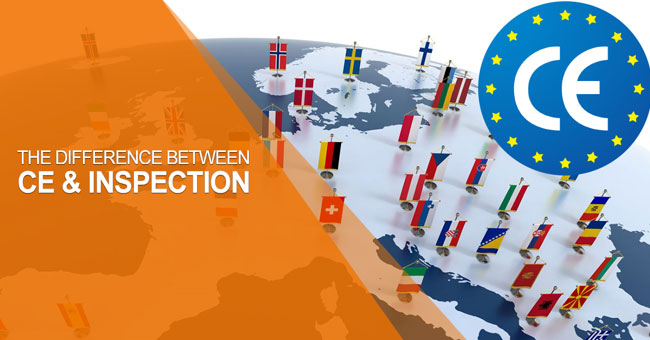In our previous article, we raised a question – if a product has passed CE, does it still need an inspection? The answer is: yes!
In this article, we’ll take the street lamp as an example to introduce the different check points covered in the CE testing and the on-site inspection.
As we mentioned, to get CE certified, the product must comply with the specific standards and requirements concerning product safety, environmental impact and consumer protection.
Specifically, the manufacturer must acquire passed test reports of RoHS, LVD, EMC, and ErP.
RoHS (Directive 2011/65/EU) specifies maximum levels for 10 restricted substances. The first six applied to the original RoHS while the last four were added under RoHS 3, which took effect on July 22, 2019.
LVD (Low Voltage Directive (2014/35/EU)) covers health and safety risks on electrical equipment operating with an input or output voltage of between
- 50 and 1000 V for alternating current
- 75 and 1500 V for direct current
The primary purpose of the LVD (2014/35/EU) is to assure that all products defined as electrical equipment and placed on the EU market are safe for use and don’t endanger the health of anyone nearby, e.g. consumers, domestic animals, real estate property, etc. The Low Voltage Directive guarantees the products’ safety when they are installed, utilized and serviced correctly.
EMC (electromagnetic compatibility, Directive 2014/30/EU) ensures that electrical and electronic equipment does not generate, or is not affected by, electromagnetic disturbance.
The EMC directive limits electromagnetic emissions from equipment in order to ensure that, when used as intended, such equipment does not disturb radio and telecommunication, as well as other equipment. The directive also governs the immunity of such equipment to interference and seeks to ensure that this equipment is not disturbed by radio emissions, when used as intended.
ErP (Energy-Related Products Directive, 2009/125/EC), also known as Ecodesign Directive, establishes a framework to set mandatory environmental requirements for energy-using and energy-related products. The ultimate aim of the Ecodesign Directive is that manufacturers of energy-using products will, at the design stage, be required to reduce the energy consumption and other environmental impacts of products.
However, what does a pre-shipment inspection include in terms of street lamp?
|
Quantity check. |
Check whether the quantity of each item and its accessories conform to your order; |
|
Workmanship check |
Check is there any scratches, poor coating, external wires, rust, dent marks, dirty marks, etc. so as to ensure that the products you receive are what you want; |
|
Function and Safety check |
Conduct on-site tests such as function test, assembly test, internal test, hi-pot tests, earth continuity test, integrating sphere test, to make sure that each item can function well and that all of the parameters conform to your requirements; |
|
Specification check |
Check length, width, height, thickness, hardness, etc. to ensure that they are the same as in the Proforma Invoice; |
|
Packaging check |
Check packaging’s quality, carton size, weight and assortment; |
|
Marking, labeling & logo |
|
|
Client’s special requirement |
Besides all of the above mentioned aspects, if clients have any additional requirements, inspectors will also follow and add into inspection procedures. |
Some other differences are as below:
|
|
CE |
Inspection |
|
Lead Time |
15-30 working days |
1-3 man-days |
|
Sample Size |
App. 3 pcs /item/test |
AQL General Level 2 |
V-Trust is experienced in both laboratory testing and inspection. We can provide one-stop service from on-site sample selection, to lab testing and inspection.
You are warmly welcome to send an inquiry to cs@v-trust.com.
Reference:
https://www.gov.uk/guidance/ce-marking
https://ec.europa.eu/growth/sectors/electrical-engineering/lvd-directive_en
https://ec.europa.eu/growth/sectors/electrical-engineering/emc-directive_en




Discussion